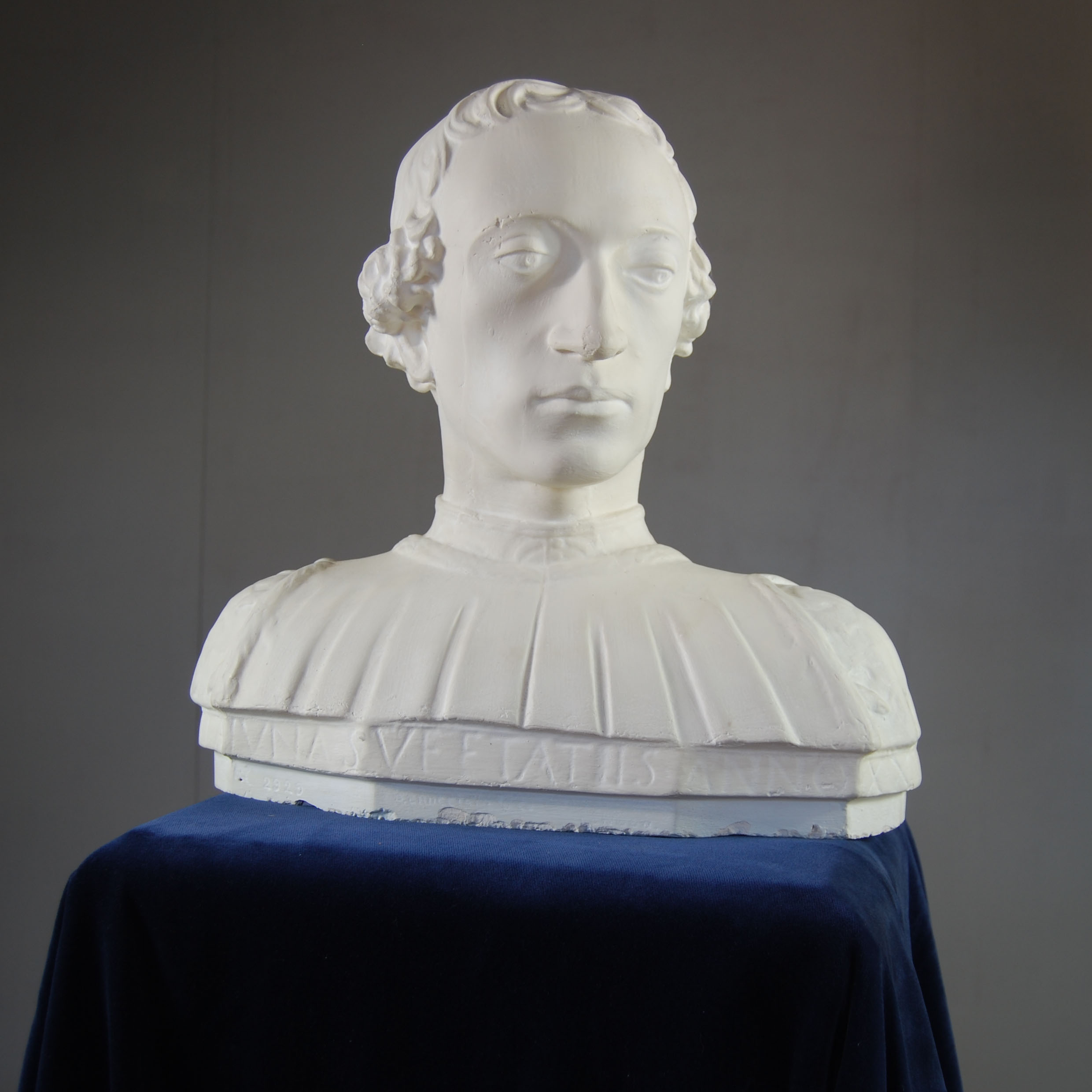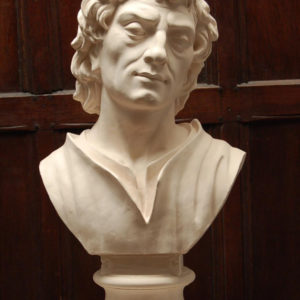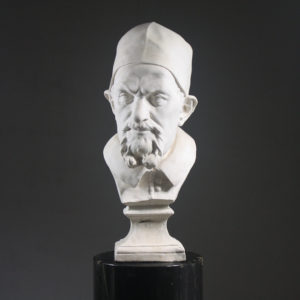No products in the basket.
An English plaster bust of Rinaldo della Luna
Cast by LASSCO from a Victorian piece-mould made by D.Brucciani & Co. for the Victoria & Albert Museum c.1892, after the Florentine 15th Century marble original by Mina da Fiesole - at the Bargello, Florence
the gaunt male with head turned to sinester, wearing a pleated tunic, with an indistinct description on the plinth "RINALDODELLA LVNA . ETATIS . ANNO XXVII OPVS MINI NE. MCCCCLXI" and bearing the Brucciani model number 2929,
£645
In stock
The sitter: Rinaldo della Luna
Rinaldo was of a family renowned as men of letters and humanists in 15th century Florence – his portrait in marble was carved in 1461 when he was 27years of age.
The sculptor: Mina da Fiesole (1429-1484)
Mina came from Tuscany and was well known for his marble busts – he was influenced by Desiderio da Settignano and Antonio Rosselino.
The Formatore:
The Victorian casting of this bust at The Victoria and Albert museum is recorded as as having been made in Florence by Oronzio Lelli in around 1885. However, at LASSCO we hold an original Victorian piece-mould with Brucciani numbering on it, and within is a signature “G Funai 1892”. It is likely then that the original marble, or the Lelli cast, was re-moulded in Brucciani’s workshops a few years after a cast was acquired by the South Kensington Museum for 8s 4d (10lire) in 1885.
Domenico Brucciani (1815-1880) was born in Lucca, Italy, moved to London as a young man, by at least 1837, and soon became a revered formatore – plaster-caster. His business built up special links with both the British Museum and the South Kensington Museum (later re-named The Victoria & Albert Museum).
His most substantial commission for the South Kensington Museum was the casting of the Pórtico de la Gloria, the 12th-century façade of the cathedral at Santiago de Compostela, in 1866. This huge undertaking – and many others including, famously, Trajan’s column itself – followed the agreement forged by Henry Cole and Prince Albert at the Paris Exposition of the previous year, signed by all the Crowned Princes of Europe, to further the common man’s experience of sculpture in-the-round by the reciprocal casting of great European sculpture. What followed was the Cast Courts at prestigious museums across Europe and beyond; Brucciani was foremost among the formatore.
He taught sculpture, moulding and casting at the Royal College of Art (including National Art Training School) from 1853 to 1861.
His company, “D Brucciani & Co.”, with workshops in Clerkenwell, survived its founder with the Covent Garden outlet still operating into Edwardian times. A catalogue of their wares is held at The National Art Library. However, by the turn of the century, the direct casting of priceless sculpture was becoming frowned upon; travel across Europe was now much easier anyway – the common man could now use the train. The company faltered. In the 1920’s its casting workshops were subsumed by the Victoria & Albert Museum.
LASSCO is delighted to have saved a number of the original piece-moulds. The making of piece-moulds – a plaster negative jigsaw enabling a cast to be released by the careful removal of the solid mould in pieces – is today a lost art; it has been rendered redundant by pliant silicons. We have duly made a silicon mould in order to preserve Brucciani’s work. The accuracy and detail of the resulting casts, taken as they are directly from the original is plain to see, and a delight.



